Today’s Current Affairs: 1st September 2025 for UPSC IAS exams, State PSC exams, SSC CGL, State SSC, RRB, Railways, Banking Exam & IBPS, etc
Table of Contents
Indravati Tiger Reserve : Leopard Found Dead
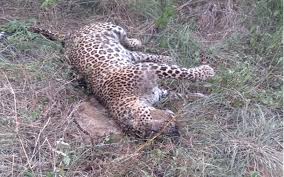
A leopard was recently found dead inside the Bhairamgarh Sanctuary of the Indravati Tiger Reserve in Bastar.
- Indravati Tiger Reserve is located in the Bijapur District of Chhattisgarh.
- The perennial river ‘Indravati’ forms the boundary of the reserve on the northern and western sides, which also happens to be the interstate boundary between Chhattisgarh and Maharashtra.
- The total area of the reserve is 2799.07 sq.km.
- The tiger reserve and the Bhairamgarh and Pamed Wildlife Sanctuaries constitute the Indravati landscape.
- It has connectivity with several tiger reserves, viz. Kawal (Telangana), Tadoba (Maharashtra), and Kanha (Madhya Pradesh).
- In general, the landscape is conflict-ridden owing to left-wing extremism.
- The landscape is undulating, with most of the area covered with small hills – Kutroo, Kandlapatru, and Matti Murka being noteworthy.
- It is home to one of the last populations of rare wild buffalo, the state animal of Chhattisgarh.
- Other animals include Nilgai, Black Buck, Sambar, Gaur, Tiger, Leopard, Chital, Sloth bears, etc.
Mashco Piro Tribe:
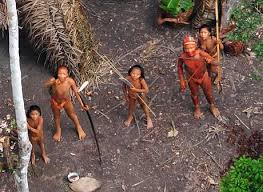
The Mashco Piro tribe, an uncontacted group in the Peruvian Amazon, has been sighted near a village, raising concerns about logging activities encroaching on their territory.
- The Mashco-Piro, or Mascho Piro, also known as the Cujareño people and Nomole, are an indigenous tribe of nomadic hunter-gatherers who inhabit the remote regions of the Amazon rainforest.
- They live deep in the rainforests of southeast Peru close to the border with Brazil and Bolivia.
- They are believed to have fled into the recesses of the jungle during the Amazon Rubber Boom in the late 1800s, a time of enslavement and death for many tribes.
- They live on the banks of the Las Piedras River in the Alto Purús National Park in huts constructed of palm leaf. In the rainy season, they retreat to huts in the rain forest.
- Their movements across their territory are highly dynamic, dictated by dry and rainy seasons.
- They speak a dialect of the Piro language.
- Members of the tribe wear very little clothing.
- Men, women, and children alike wear only a yellowish-brown cloth above the waist and perhaps arm and leg bands of the same color.
- They have medium stature and an athletic build.
- All have straight black hair worn shoulder length or longer.
- Men probably hunt with the weapons they have been seen carrying, such as bows and arrows, as well as spears.
- Peru’s government has forbidden all contact with the Mashco Piro, fearing the spread of a disease among the population to which it has no immunity.
Vrindavani Vastra : In News

Assam is likely to get the revered 16th-century “Vrindavani Vastra” from the British Museum in London for exhibition in 2027.
- The Vrindavani Vastra is a silk textile woven in Assam.
- The childhood stories of Lord Krishna in Vrindavan, his divine pastimes, and various events are woven with thread on this cloth.
- It was created under the guidance of Srimanta Sankardeva, at the request of Koch king Nara Narayan, who ruled over parts of modern-day Assam and West Bengal.
- Notably, Nara Nararan had sheltered Sankardeva after the Vaishnav saint was targeted by the Ahom kingdom on the instigation of Brahmin priests in the state.
- The textile serves as a testament to Assamese weaving, incorporating elements from various artistic traditions, and travelled from Assam to Tibet before being acquired by the British Museum in 1904.
- The exhibit, acquired by the British Museum, is nine and a half metres long and is made up of several pieces of silk drapes and originally featured 15 separate pieces that were later assembled.
- A masterpiece of sacred art, the Vrindavani Vastra is a central part of Assamese Vaishnavism.
Mela Patt Festival:
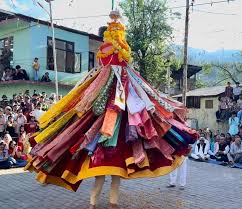
In Jammu and Kashmir the annual three-day Mela Patt festival started in Doda district.
- Mela Patt Festival is dedicated to Lord Vasuki Nag, the presiding deity of Bhaderwah Valley.
- The festival, rooted in the Nag culture, marks the historic meeting between Mughal Emperor Akbar and King Nag Pal of Bhaderwah.
- The festival has been celebrated since the 16th century.
- This festival was first celebrated by King Nag Pal when Bhaderwah was known as Bhadarkashi,
- It is observed every year on Nag Panchami, seven days after the conclusion of the Kailash Yatra, and is renowned for its inclusive nature.
- The unique ‘Dikko Dance,’ a traditional folk performance where men and women of all religions and backgrounds participate, serves as a symbol of peace, pride, and communal harmony.
- Dhakku dance also known as traditional dance of Dogras has a respectable place in the folk dances of India.
- The festival not only honors religious traditions but also showcases the proud historical legacy of Bhaderwah.
- Mela Patt holds a special place in the cultural and religious fabric of the region.
Purple Notice:
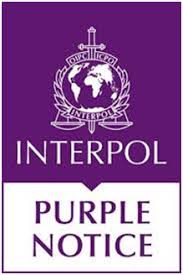
The Enforcement Directorate has secured an Interpol Purple Notice on trade-based money laundering modus operandi.
- Purple Notice is one of eight types published by the Interpol
- It provides member countries with information on modus operandi, objects, devices and concealment methods used by criminals.
- Unlike notices that target specific individuals (such as Red Notices), Purple Notices focus on practices and tools that pose a threat to public safety.
- Other notices of Interpol: Red, yellow, blue, Black, green, Orange, Silver Notice (pilot phase)
Interpol:
- The International Criminal Police Organisation (Interpol) was founded in 1923
- Members: Interpol is an international police organisation made up of 196 member countries.
- It does not work under the UN.It has enjoyed a special role – that of Permanent Observer at the United Nations – since 1996.
- Headquarter: Lyon, France.
- Functions of Interpol
- It is not a police force in the traditional sense—its agents are not able to arrest criminals.
- It is more of an information-sharing network, providing a way for national police forces to co-operate effectively and
- Tackle international crime ranging from human trafficking and terrorism to money laundering and illegal art dealing.
- Sharing of information is done by issuing colour-coded notices in four languages – English, Spanish, French, and Arabic.
- The organization operates centralized criminal databases that contain fingerprint records, DNA samples and stolen documents.
Adi Vaani:
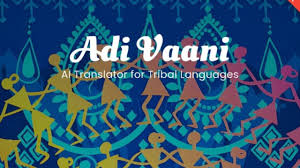
The Ministry of Tribal Affairs, Government of India, is launching the Beta Version of “Adi Vaani” language translator.
- Adi Vaani is an AI-based translation tool that serves as the foundation for a future large language model dedicated to tribal languages.
- It is India’s first AI-powered translator for tribal languages.
- It is developed under the banner of Janjatiya Gaurav Varsh.
- It is designed to bridge communication gaps between tribal and non-tribal communities, while safeguarding endangered tribal languages using advanced Artificial Intelligence (AI).
- The project combines advanced AI technologies with community-driven approaches to protect, promote, and revitalize tribal languages and cultures across India.
- It is developed by a national consortium of premier institutions led by IIT Delhi with BITS Pilani, IIIT Hyderabad, and IIIT Nava Raipur in collaboration with Tribal Research Institutes (TRIs) in Jharkhand, Odisha, Madhya Pradesh, Chhattisgarh, and Meghalaya,
Conocarpus Tree : Recommend to Ban
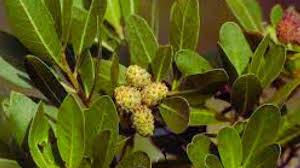
The government-appointed expert panel on environment has recommended the Supreme Court to ban a fast-growing exotic tree species called Conocarpus tree.
- Conocarpus Tree is a flowering plant belonging to the family of Combretaceae.
- It is an invasive mangrove species.
- The plant species has two types, one which is native to the coastal areas of tropical America, ranging from Bermuda and the Bahamas to Brazil, and extending along the Pacific coasts and parts of West Africa;
- Others are found in arid coastal zones of Somalia and Yemen and across eastern and northern Africa and the Arabian Peninsula.
- In India, the growth of the tree was found prevalent in Gujarat’s coastal and arid districts such as Kachchh.
- This tree is famous for its dark green leaves color throughout the year and withstands harsh environmental conditions such as high and low temperatures.
- It is very adaptive and could grow even in areas with extreme salinity.
- It absorbs more water from soil than other species and is a threat to groundwater.
- This species goes deep into the ground and grows too much to damage the communication cables, drainage lines and drinking water pipelines.
- During flowering seasons, the tree releases pollen, which may aggravate respiratory conditions such as asthma, rhinitis, and other allergic reactions, particularly in children and the elderly.
- It also poses a safety risk as its dry, brittle wood is highly flammable during the summer months.
Mitochondrial Protein Import:
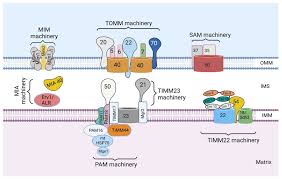
Researchers at Caltech University have uncovered new rules governing mitochondrial protein import, revising the long-standing understanding of how proteins are transported into mitochondria.
- Earlier, it was believed that mitochondrial proteins are imported only after translation is completed in the cytosol.
- Proteins were thought to fully synthesize on ribosomes before passing through mitochondrial membrane channels.
- Around 20% of mitochondrial proteins are cotranslationally imported, i.e., they are imported while still being synthesized by ribosomes.
- This mechanism mainly applies to large and structurally complex proteins that require assistance during folding.
- If these proteins fully fold in the cytosol, they risk forming irreversible structures that block import channels.
- Such proteins contain a mitochondrial targeting sequence, but this alone is insufficient for cotranslational delivery.
- A second signal is required – the first large protein domain that emerges during translation.
- This domain acts like a “code to unlock the boarding pass”, ensuring the protein is guided into mitochondria early.
- Experiments confirmed that transplanting these domains onto other proteins rerouted them for cotranslational import.
- Mitochondria are double-membraned organelles that generate ATP (adenosine triphosphate), the universal cellular energy currency.
- They originated over a billion years ago through endosymbiosis between a primitive archaeal cell and a bacterium.
- Over time, mitochondria transferred most of their genes to the host nucleus, making them dependent on the host cell for protein supply.
State Energy Efficiency Index (SEEI) 2024:

The Bureau of Energy Efficiency (BEE) released the State Energy Efficiency Index (SEEI) 2024 on 29 August 2025.
- State Energy Efficiency Index (SEEI) is composite index to track and compare the energy efficiency progress of Indian states and Union Territories.
- Developed by: Bureau of Energy Efficiency (BEE) in collaboration with the Alliance for an Energy Efficient Economy (AEEE).
- First Launched: 2018, with SEEI 2024 being the sixth edition.
Key Findings of SEEI 2024:
- Coverage: Assessed 36 States/UTs for FY 2023–24 using 66 indicators.
- Sectors Covered: Buildings, Industry, Transport, Agriculture, DISCOMs, Municipal Services, Cross-sector initiatives.
- Performance Categories:
- Front Runners (>60%)
- Achievers (50–60%)
- Contenders (30–50%)
- Aspirants (<30%)
- Top Performers:
- Maharashtra (>15 MToE group)
- Andhra Pradesh (5–15 MToE group)
- Assam (1–5 MToE group)
- Tripura (<1 MToE group)
- Sectoral Progress:
- 24 states notified Energy Conservation Building Code (ECBC) 2017.
- 31 states adopted electric mobility policies.
- 13 states promoted solar agricultural pumps, with Kerala leading at 74% adoption.
- All 36 States/UTs prepared State Energy Efficiency Action Plans (SEEAPs).
Digital Connectivity Rating:

On 29 August 2025, TRAI approved eight Digital Connectivity Rating Agencies (DCRA). These agencies will assess in-building telecom and internet quality and assign star ratings to properties.
- Digital Connectivity Rating is a regulatory framework under TRAI’s 2024 Regulations.
- It evaluates in-building telecom infrastructure and provides a star-based quality score.
- Designed to bring transparency to digital readiness of properties for residents, tenants, and businesses.
- Objectives is to Enhance consumer choice by offering clear ratings on digital connectivity before property purchase or rental.
- Promote competition among developers to integrate robust telecom systems in new buildings.
- Facilitate Digital India and Smart City initiatives by ensuring urban spaces are digitally enabled.
- Support future readiness for 5G and upcoming 6G rollouts.
Key Features
- Eight approved agencies include Ardom Towergen, Crest Digitel, CTL Infocom, ESTEX Telecom, Frog Cellsat, Phistream Consulting, Shaurrya Teleservices, and TUV SUD South Asia.
- Validity: Registrations valid for 5 years from 27 August 2025.
- Assessment manual released by TRAI on 13 August 2025 sets methodology.
- Star Rating system: Properties will be ranked from 1 to 5 stars based on connectivity strength, coverage, and reliability.
- Scope: Applicable to residential complexes, offices, malls, and high-rise buildings.
India and Japan have signed a Memorandum of Cooperation (MoC) to implement a Joint Crediting Mechanism:
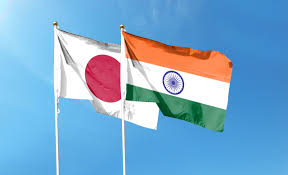
India and Japan have signed a Memorandum of Cooperation (MoC) to implement a Joint Crediting Mechanism (JCM), advancing low-carbon technology projects.
- Joint Crediting Mechanism (JCM) is a Japanese initiative that invests in low-carbon technologies in developing nations.
- Emission reductions achieved are credited partly to Japan’s account, helping it meet its emission-reduction commitments.
- Objectives
- Facilitate flow of Japanese low-carbon technologies to India.
- Encourage financial flows for green projects and infrastructure.
- Strengthen domestic skills in handling advanced climate technologies.
- Enable India to trade credits with Japan under Article 6.2 of Paris Agreement.
- Support India’s shift towards clean energy and climate resilience.
Prime Minister Narendra Modi will attend the 25th SCO Heads of State Council Summit in Tianjin, China, on August 31, 2025:
Shanghai Cooperation Organization (SCO) is a regional intergovernmental organisation focusing on political, economic, and security cooperation.
Established in 2001 at Shanghai, evolving from the “Shanghai Five” grouping (1996). Headquarters :Beijing, China. Membership 8 Permanent Members: China, Russia, India, Pakistan, Kazakhstan, Kyrgyzstan, Tajikistan, Uzbekistan. Observers: Afghanistan, Belarus, Mongolia, Iran (now moving towards full membership). Dialogue Partners: Turkey, Sri Lanka, Nepal, Egypt, Saudi Arabia, Qatar, etc.
2025 SCO Summit Highlights:
- Hosted by: China (its 5th time hosting).
- Theme: “Upholding the Shanghai Spirit: SCO on the Move”.
- Focus Areas:
- Adoption of a ten-year development strategy (2025–2035).
- Review of 25 years of SCO achievements.
- Regional security and counter-terrorism cooperation.
- Strengthening trade, energy, and connectivity projects.
- Push for sustainable development and climate action.
- Participation: 20+ world leaders and 10 heads of international organisations.
- India’s Role: To advance regional connectivity, anti-terror collaboration, energy cooperation, and sustainable growth, balancing ties with Russia, China, and Central Asia.
President Murmu Presents SCOPE Eminence Awards:
India’s development journey, President Droupadi Murmu presented the SCOPE Eminence Awards 2022–23 on August 29, 2025, in New Delhi. The awards, instituted by the Standing Conference of Public Enterprises (SCOPE), honor outstanding performance across governance, innovation, and sustainability. The President underlined the critical role Central Public Sector Enterprises (CPSEs) will play in achieving the vision of a Developed India by 2047.
International Day of Enforced Disappearances 2025:
Every year on 30 August, the world observes the International Day of the Victims of Enforced Disappearances, a grim reminder of one of the gravest violations of human rights and human dignity. Enforced disappearances, often used as a tool of repression and political control, create not only unimaginable suffering for victims but also deep trauma for families, communities, and societies.The UN Declaration on the Protection of All Persons from Enforced Disappearance (1992) defines enforced disappearance as, “The arrest, detention or abduction of persons against their will by state authorities or groups acting with their support, followed by a refusal to acknowledge the deprivation of liberty or concealment of the person’s fate or whereabouts, placing them outside the protection of the law.” This means that the victim is essentially erased from legal existence, making it one of the most severe violations of international law.
India’s Forex Reserves Dip $4.38 Billion to $690.72B:
India’s foreign exchange reserves registered a decline of $4.38 billion, slipping to $690.72 billion for the week ending August 22, 2025, according to data released by the Reserve Bank of India (RBI). The fall comes after a recent surge in reserves, which had touched a record high of $704.88 billion in September 2024.In the previous week (ending August 15, 2025), forex reserves had increased by $1.48 billion to $695.10 billion. The current fall reflects adjustments in currency assets and international market movements. India’s reserves still remain among the highest globally, providing a significant buffer against external shocks.
Nuakhai Festival 2025: Odisha’s Harvest Celebration
The Nuakhai Festival 2025, one of the most cherished cultural and agricultural celebrations of Western Odisha, will be observed on 28 August 2025 (Thursday). Celebrated on the panchami tithi of Bhadraba month, a day after Ganesh Chaturthi, the festival symbolizes gratitude for the new rice harvest and the strengthening of family and community bonds. The word “Nuakhai” comes from two Odia words — “nua” (new) and “khai” (food), meaning eating the newly harvested rice. Traditionally linked to agriculture, the festival, Marks the first consumption of new rice after offering it to the deity.
Brings a ray of hope for farmers, symbolizing prosperity and abundance. Serves as a cultural identity for the Sambalpuri region of Odisha, as well as adjoining areas of Jharkhand and Chhattisgarh.
Bihar Cabinet Clears Mahila Rojgar Yojana for Women’s Jobs:
The Bihar government, under the leadership of Chief Minister Nitish Kumar, approved the Mukhyamantri Mahila Rojgar Yojana on August 29, 2025. The scheme aims to promote self-employment among women through financial assistance and infrastructural support, helping improve livelihoods and reduce out-migration.At the core of the scheme is the provision of ₹10,000 as initial financial aid to one woman per family in Bihar. This amount will be directly transferred to the beneficiary’s bank account via Direct Benefit Transfer (DBT), ensuring transparency and timely disbursal.
Ajaya Babu Valluri Wins Gold at Commonwealth Weightlifting:
Indian weightlifting continues to shine on the international stage, with Ajaya Babu Valluri clinching a gold medal at the Commonwealth Weightlifting Championships 2025 in Ahmedabad. His performance added to India’s growing medal tally at the event and secured his qualification for the 2026 Commonwealth Games in Glasgow.Competing in the men’s 79kg category, Ajaya Babu Valluri lifted a combined total of 335 kilograms, narrowly edging past Malaysia’s Muhammad Erry (333 kg). Nigeria’s Adedapo Adeleke secured bronze with 306 kg.
Prime Minister of India has nominated two people as new members of the National Disaster Management Authority:
The Prime Minister of India has nominated two people as new members of the National Disaster Management Authority (NDMA) and re-nominated three existing members for three years.The NDMA, established under the Disaster Management Act, 2005, is the country’s apex body for disaster management and is chaired ex officio by the Prime Minister of India.NDMA is responsible for laying down the national policies, plans, and guidelines for disaster management, coordinating and enforcing implementation of these policies, and approving plans developed by ministries, states, and other agencies to ensure integrated responses to disasters.The NDMA is chaired by the Prime Minister of India, assisted by a Vice-Chairperson (Cabinet Minister rank) and up to eight Members (Minister of State rank).
350th Martyrdom Day of Guru Tegh Bahadur Ji:
Indian Railways will commemorate the 350th Martyrdom Day of Guru Tegh Bahadur Ji with special trains, cultural programs, and heritage initiatives.Guru Tegh Bahadur was Ninth Guru of Sikhism (1621–1675), remembered as Hind Di Chadar (Protector of India). Martyred in Delhi in 1675 for opposing forced conversions under Mughal rule. Symbol of spiritual courage, human rights, and freedom of conscience.Founded several towns including Anandpur Sahib, which later became a Sikh spiritual and military centre. Strengthened Sikh institutions and spread teachings through hymns later included in the Guru Granth Sahib.
PM Modi Receives Auspicious Daruma Doll in Japan Visit:
During his official visit to Japan, Prime Minister Narendra Modi was presented with a Daruma doll on August 29, 2025, by Rev Seishi Hirose, Chief Priest of the Shorinzan Daruma-Ji Temple in Takasaki, Gunma Prefecture. This cultural exchange, though symbolic, reflects the deep civilizational and spiritual connections that bind India and Japan through centuries of shared heritage.The Daruma doll, cherished in Japanese culture, is regarded as an auspicious talisman of good luck and perseverance. Traditionally red and modeled after Bodhidharma (Daruma Daishi), the founder of Zen Buddhism in Japan, the doll symbolizes goal-setting, patience, and success through adversity.




